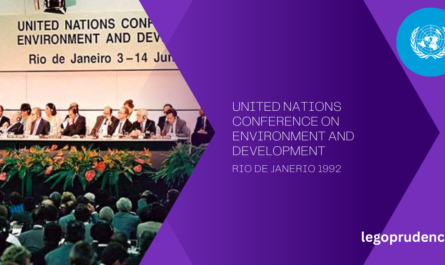History
Svante Arrhenius, a renowned Swedish scientist, made a groundbreaking contribution to the understanding of climate change and the greenhouse effect in the late 19th century. In 1896, Arrhenius was the first to suggest that the combustion of fossil fuels could lead to increased global warming by raising atmospheric carbon dioxide levels. He proposed a relationship between atmospheric CO2 concentrations and temperature, highlighting the potential impact of human activities on the Earth’s climate.
Working alongside Thomas Chamberlin, Arrhenius calculated that human-induced emissions of carbon dioxide could contribute to warming the planet by trapping heat in the atmosphere. Although the direct verification of their findings did not occur until much later, in 1987 it was recognized that the climate had indeed been warming, with 1988 being notably warmer than any year since 1880.
The concept of the greenhouse effect, as theorized by Arrhenius and others, gained significant recognition and scientific support. In response to growing concerns about climate change, the Intergovernmental Panel on Climate Change (IPCC) was established in 1988 by the United Nations Environmental Programme and the World Meteorological Organization. The IPCC’s primary objective is to assess and predict the potential impacts of the greenhouse effect on the Earth’s climate based on existing climate models and scientific literature.
Through its comprehensive assessments and reports, the IPCC plays a crucial role in informing policymakers, governments, and the public about the risks of climate change and the urgent need for mitigation and adaptation measures. By synthesizing scientific research and expert knowledge, the IPCC contributes to a better understanding of the greenhouse effect and its implications for the environment, society, and future generations.
The Natural Greenhouse Effect
The greenhouse effect is the rise in temperature that the Earth experiences because certain gases in the
atmosphere (water vapor, carbon dioxide, nitrous oxide, ozone, methane, for example) trap energy that comes
from the sun. These gases are usually called greenhouse gases since they behave much like the glass panes in a
greenhouse. The glass panels of the greenhouse let in the light but keep heat from escaping and this is similar to
the effect these gasses have on earth.
Sunlight enters the Earth’s atmosphere, passing through the greenhouse gases. As it reaches the Earth’s surface,
land, water, and biosphere absorb the sunlight’s energy. Once absorbed, this energy is sent back into the
atmosphere. Some of the energy passes back into space, but much of it remains trapped in the atmosphere by the
greenhouse gases. This is the completely natural process and without these gases all the heat would escape back
into space and Earth’s average temperature would be about 30 degrees Celsius (54 degrees Fahrenheit) colder.
The greenhouse effect is very important process, because without the greenhouse effect, the Earth would not be
warm enough for humans to live. But if the greenhouse effect becomes stronger, it could make the Earth warmer
than usual. Even a little extra warming may cause problems for humans, plants, and animals.
The Enhanced Greenhouse Effect
Some human activities also produce greenhouse gases and these gases keep increasing in the atmosphere. The
change in the balance of the greenhouse gases has significant effects on the entire planet. Burning fossil fuels –
coal, oil and natural gas – releases carbon dioxide into the atmosphere. Cutting down and burning trees also
produces a lot of carbon dioxide. A group of greenhouse gases called the chlorofluorocarbons have been used in
aerosols, such as hairspray cans, fridges and in making foam plastics.
Since there are more and more greenhouse gases in the atmosphere, more heat is trapped, which makes the Earth
warmer. This is known as global warming. A lot of scientists agree that man’s activities are making the natural
greenhouse effect stronger. If we carry on polluting the atmosphere with greenhouse gases, it will have very
dangerous effects on the Earth. Today, the increase in the Earth’s temperature is increasing with unprecedented
speed.
To understand just how quickly global warming is accelerating, consider that during the entire 20th century, the
average global temperature increased by about 0.6 degrees Celsius (slightly more than 1 degree Fahrenheit). Using
computer climate models, scientists estimate that by the year 2100 the average global temperature will increase
by 1.4 degrees to 5.8 degrees Celsius (approximately 2.5 degrees to 10.5 degrees Fahrenheit)
What is Greenhouse Effect?
Definition of Greenhouse Effect
“Greenhouse effect is the process by which radiations from the sun are absorbed by the greenhouse gases and not reflected back into space. This insulates the surface of the earth and prevents it from freezing.”
During the day the sun heats up the earth’s atmosphere. At night, when the earth cools down the heat is radiated back into the atmosphere. During this process, the heat is absorbed by the greenhouse gases in the earth’s atmosphere. This is what makes the surface of the earth warmer, that makes the survival of living beings on earth possible.
Greenhouse gases consist of carbon dioxide, methane, ozone, nitrous oxide, chlorofluorocarbons, and water vapor. Water vapor, which reacts to temperature changes, is referred to as ‘feedback’, because it amplifies the effect of forces that initially caused the warming.
Scientists have determined that carbon dioxide plays a crucial role in maintaining the stability of Earth’s atmosphere. If carbon dioxide were removed, the terrestrial greenhouse effect would collapse, and Earth’s surface temperature would drop significantly, by approximately 33°C (59°F).
However, due to the increased levels of greenhouse gases, the temperature of the earth has increased considerably. This has led to several drastic effects.
The greenhouse effect acts as a fundamental process that regulates the temperature of Earth’s surface by trapping heat in the atmosphere through the presence of ‘greenhouse gases.’ These gases, acting like a protective blanket, aid in preserving a warmer climate than would be feasible otherwise. Key greenhouse gases encompass carbon dioxide, methane, ozone, nitrous oxide, chlorofluorocarbons, and water vapor. Among these, water vapor stands out as a ‘feedback’ component, intensifying the impact of factors initiating warming by reacting to temperature fluctuations.
At its core, the greenhouse effect orchestrates the heating of Earth’s surface up to the troposphere, primarily driven by elevated concentrations of carbon dioxide, water vapor, methane, and various other gases. As sunlight penetrates the atmosphere and warms the Earth’s surface, the ensuing energy is radiated back into space in the form of infrared radiation. Within the greenhouse effect paradigm, these concentrated gases intercept and absorb this energy, leading to an elevation in global temperatures. Consequently, the greenhouse effect and global warming are intrinsically linked phenomena, each influencing and exacerbating the other.
This intricate interplay of greenhouse gases and thermal dynamics underscores the critical role of the greenhouse effect in sustaining life on Earth. By upholding a thermal equilibrium that distinguishes our planet from others in the solar system, the greenhouse effect fosters the conditions necessary for life to flourish. It is this delicate balance that underscores the importance of comprehending and addressing the causes and implications of the greenhouse effect to mitigate its impact on our planet’s climate system.
In addition to the aforementioned gases, other sources contribute to the greenhouse effect, such as deforestation, industrial activities, and agricultural practices. These factors further emphasize the multifaceted nature of this phenomenon and the necessity of adopting proactive measures to curb its escalating influence on global climate patterns. By elucidating the complexities of the greenhouse effect and its interconnections with global warming, we can cultivate a deeper understanding of the environmental challenges at hand and pave the way for sustainable solutions to safeguard the future of our planet.
Greenhouse Gases
“Greenhouse gases are the gases that absorb the infrared radiations and create a greenhouse effect. For e.g., carbon dioxide and chlorofluorocarbons the major contributors to the greenhouse gases are factories, automobiles, deforestation, etc. The increased number of factories and automobiles increases the amount of these gases in the atmosphere. The greenhouse gases never let the radiations escape from the earth and increase the surface temperature of the earth. This then leads to global warming.
The concentration of gases that lead to trapping of heat in the atmosphere is known as greenhouse gases. Greenhouse gases include –
- Carbon dioxide (CO2)
- Methane (CH4)
- Nitrous oxide (N2O)
- Fluorinated gases like halons, hydrochlorofluorocarbons, chlorofluorocarbons, nitrogen trifluoride, sulphur hexafluoride etc.
However, the emission scale of these greenhouse gases varies, leading to differences in its concentration in atmosphere.
Some important Greenhouse gases
The major greenhouse gases whose concentration is increasing with human activities include methane as well as carbon dioxide and nitrous oxide.
Carbon Dioxide:
Carbon dioxide (CO2) is a primary greenhouse gas generated through both natural processes and human endeavors. While natural occurrences such as the decomposition of organic matter and volcanic eruptions contribute to its presence, human activities significantly amplify CO2 levels. Combustion of fossil fuels like coal, oil, and natural gas, as well as deforestation and industrial processes, release substantial amounts of CO2 into the atmosphere. This gas is also exhaled by aerobic organisms and absorbed by plants during photosynthesis, forming a crucial part of the carbon cycle.
Methane:
Methane (CH4) is a potent greenhouse gas with a greater radiative forcing impact per molecule compared to other gases. It enters the atmosphere through various pathways, including the decomposition of organic materials by anaerobic bacteria in wetlands, rice paddies, and landfills. Methane emissions are also linked to human activities such as agriculture (livestock digestion and manure management), coal mining, and natural gas extraction. Additionally, methane is released during the production and transportation of fossil fuels, contributing significantly to its atmospheric concentration.
Nitrous Oxide:
Nitrous oxide (N2O) is another greenhouse gas arising from human activities in industrial and agricultural sectors. Industrial processes, agricultural practices like the use of synthetic fertilizers, and waste treatment facilities are primary sources of nitrous oxide emissions. Combustion of fossil fuels and burning solid waste also release this gas into the atmosphere. Notably, nitrous oxide has a substantial impact on global warming due to its long atmospheric lifetime and potent heat-trapping capabilities.
Fluorinated Gases:
Hydrofluorocarbons, perfluorocarbons, and sulfur hexafluoride are synthetic, powerful greenhouse gases that are emitted from a variety of industrial processes. Fluorinated gases are sometimes used as substitutes for ozone-depleting substances (i.e., CFCs, HCFCs, and halons). These gases are typically emitted in smaller quantities, but because they are potent greenhouse gases, they are sometimes referred to as High Global Warming Potential gases (“High GWP gases”).
Causes of Greenhouse Effect
The greenhouse effect is a natural process that warms the Earth’s surface. However, human activities have intensified this effect, leading to global warming and climate change. Here are the main causes of the greenhouse effect:
- Fossil Fuel Burning
- The burning of fossil fuels like coal, oil, and natural gas for electricity generation, transportation, and industrial processes releases carbon dioxide (CO2) into the atmosphere. CO2 is a major greenhouse gas that traps heat and contributes to global warming.
- Deforestation
- Trees play a crucial role in absorbing CO2 from the atmosphere through photosynthesis. Deforestation, which involves cutting down trees on a large scale, reduces the planet’s capacity to absorb CO2, leading to an increase in greenhouse gases and global warming.
- Farming
- The use of fertilizers in agriculture releases nitrous oxide (N2O), another potent greenhouse gas, into the atmosphere. Overuse of fertilizers can contribute to the greenhouse effect and disrupt the Earth’s climate balance.
- Industrial Activities
- Industries and factories emit various greenhouse gases, such as methane (CH4) and fluorinated gases, during manufacturing processes. Chemical waste and emissions from industries contribute significantly to the greenhouse effect.
- Transportation
- The use of vehicles powered by fossil fuels, such as cars, trucks, and airplanes, releases significant amounts of CO2 and other pollutants into the atmosphere. Transportation is a major contributor to the greenhouse effect.
- Population Increase
- Population explosion in different parts of the world has caused enormous pressure on existing resources, which is finite. Higher demand has caused a substantial increase in manufacturing, causing greater emission of harmful gases.
- Landfill and industrial waste
- Landfill of industrial produce and industrial waste emanating from coal mining activities, cement production, and oil extraction among others lead to the generation of harmful greenhouse gases.
Impact of the Greenhouse Effect
The greenhouse effect, exacerbated by human activities, has led to several significant consequences that are impacting the environment and ecosystems worldwide. Here are the major consequences and impacts of the greenhouse effect:
- Ozone Layer Depletion:
- The accumulation of greenhouse gases, including chlorofluorocarbons, carbon dioxide, and methane, contributes to ozone layer depletion. This allows harmful ultraviolet (UV) radiation from the sun to reach the Earth’s surface, leading to increased risks of skin cancer, cataracts, and other health issues. Furthermore, ozone depletion can disrupt ecosystems and alter climate patterns.
- Global Warming:
- Greenhouse gases trap heat in the Earth’s atmosphere, leading to global warming. This phenomenon causes a rise in global temperatures, melting glaciers and ice caps, disrupting weather patterns, and contributing to sea level rise. Global warming also impacts agriculture, water resources, biodiversity, and human health, leading to more frequent and severe natural disasters.
- Environmental Degradation:
- The greenhouse effect contributes to environmental degradation by altering weather patterns and increasing the frequency of extreme weather events such as droughts, floods, and storms. Soil degradation, loss of biodiversity, and decreased agricultural productivity are some of the consequences of environmental degradation caused by the greenhouse effect.
- Acidification of Water Bodies:
- The increase in greenhouse gases in the atmosphere leads to the acidification of water bodies. When these gases mix with rainwater, they form acid rain, which lowers the pH of water bodies and affects aquatic ecosystems. Acidification can harm marine life, including coral reefs, shellfish, and fish populations, and disrupt the balance of aquatic environments.
- Extinction of Species:
- The rapid changes in climate and habitat conditions resulting from the greenhouse effect can lead to the extinction of plant and animal species. Species that are unable to adapt to changing environmental conditions or migrate to more suitable habitats face the risk of extinction, disrupting ecosystems and biodiversity.
- Smog and Air Pollution:
- The greenhouse effect contributes to the formation of smog, a type of air pollution that results from the interaction of pollutants in the atmosphere. Smog can worsen respiratory conditions, such as asthma, and lead to health issues for humans and wildlife. Man-made activities, including burning fossil fuels and industrial emissions, are major contributors to smog formation.
- Violent Storms:
- Increased greenhouse gas concentrations in the atmosphere can lead to changes in atmospheric conditions, including temperature and moisture levels. These changes can fuel the intensity and frequency of severe weather events such as thunderstorms, hurricanes, and tornadoes. Violent storms can cause extensive damage to infrastructure, homes, and natural habitats, posing risks to human life and property.
- Tropical Cyclones:
- The warming of the Earth’s surface due to the greenhouse effect can contribute to the formation and intensification of tropical cyclones, also known as hurricanes or typhoons. Warmer ocean temperatures provide more energy for these storms, leading to stronger winds, heavier rainfall, and increased storm surges. Tropical cyclones can result in widespread devastation, flooding, and loss of life in coastal regions.
Conclusion
In conclusion, the greenhouse effect, exacerbated by human activities such as the burning of fossil fuels, deforestation, industrial emissions, and agricultural practices, has led to a range of detrimental consequences for the environment and society. From ozone layer depletion and global warming to environmental degradation, acidification of water bodies, extinction of species, and the intensification of violent storms and tropical cyclones, the impacts of the greenhouse effect are far-reaching and urgent.
Addressing the root causes of the greenhouse effect and mitigating its effects require collective global action, sustainable practices, and a commitment to reducing greenhouse gas emissions. By transitioning to renewable energy sources, promoting conservation efforts, implementing climate-resilient infrastructure, and fostering community preparedness, we can work towards a more sustainable future that safeguards the planet and its inhabitants.
It is crucial for individuals, communities, governments, and industries to collaborate in adopting environmentally conscious practices and policies to combat climate change, protect ecosystems, and ensure a stable and livable planet for current and future generations. Taking proactive measures to address the greenhouse effect is imperative in safeguarding the health of our planet and securing a sustainable future for all.




Преди време пътувах с Мистрал Травел и останах много удовлетворена! Планирането беше безупречна – от резервацията до самото пътуване. Избрах туристическа програма до чешката столица Прага и всичко беше организирано на високо ниво – хотелът беше комфортен, екскурзоводът с висока квалификация, а програмата завладяваща и добре балансирана. Благодарение на тях успях да се потопя на атмосферата и забележителностите на града без никакви грижи. С радост бих се доверила на Мистрал отново и препоръчвам на всички да изберат техните предложения!